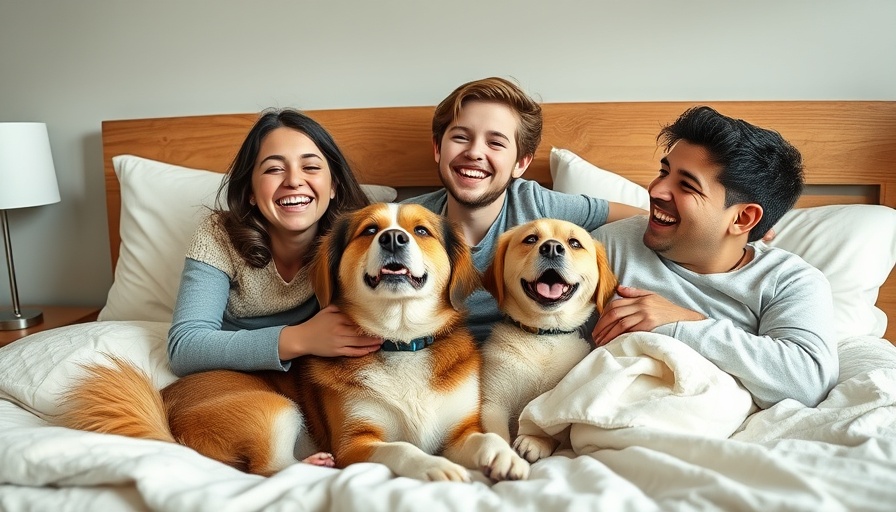
Adapting Canines: Understanding the Need for Routines
When it comes to your dog's well-being, one key factor stands out: routines. Dogs thrive in structured environments where they know what to expect. While it may not be necessary to schedule every minute, establishing steady times for walks, meals, and play can lead to a happier, well-adjusted pet. As summer fades and school begins, both humans and their dog counterparts need to adjust to new rhythms. A gradual shift in schedule can help ease these transitions, allowing your dog time to adapt without undue stress.
The Emotional Impact of Separation
Many pet owners grapple with feelings of guilt when leaving their furry friends at home, particularly after spending hours together during the summer. However, it’s important to remember that dogs are resilient creatures who can cope with alone time. They often enjoy having space to recharge, sniff around their familiar territory, and nap comfortably. Yet, if they are accustomed to human companionship for long periods, an abrupt shift to solitude can usher in anxiety. Signs of this can include destructive behavior like chewing or urinating indoors, making it essential to pay attention to their needs during this transition.
Creating a Balanced Day for Your Dog
If your pet will be left alone for extended hours, especially if this is a new development, consider employing a midday dog walker. It may seem like an additional expense, but this simple investment can prevent behavioral issues by providing your dog with the interaction and exercise they crave. Regular visits can also break up their day, adding much-needed excitement and mental stimulation. Just a short walk or play session can improve their mood significantly, showing how small adjustments can yield positive results.
Crate Training: A Home Away From Home
For anxious dogs, crate training can offer a safe haven. Many owners worry that crating their pets is akin to punishment, but with the right approach, it can feel quite the opposite. Introduce your dog to the crate gradually, making it a cozy and inviting space filled with their favorite blankets and toys. This process can transform the crate from a confinement tool into a comforting lair where they feel secure. Providing items that smell like you, such as a worn t-shirt, can also soothe their anxiety, helping them adjust better to your absence.
The Power of Smell in Calming Dogs
Interestingly, dogs experience the world primarily through their incredible sense of smell. This sensitivity means that familiar scents are more than just comfort—they act as reassurance when you are away. Offering your dog an item for them to snuggle with, like a towel imbued with your scent, can alleviate feelings of loneliness and reinforce their bond with you. This understanding underscores the emotional connection between humans and dogs, reminding us why maintaining a comforting environment is vital.
Maintaining Consistency Amidst Change
As school starts and daily routines shift, take the time to consider how these changes may affect your dog. Just as families must adapt, so too must our canine companions. Planning ahead and restructuring their schedule to align with new family activities can mitigate the stress associated with change. By implementing gradual changes, providing midday walks, and fostering a comforting environment, you pave the way for a happy home in the face of transition.
In the end, taking a few thoughtful steps can ensure a seamless shift to your family’s new routine. Embrace the changes with open arms, and don't forget to include your four-legged friend in the process to promote harmony and happiness throughout your household.
 Add Row
Add Row  Add
Add 




Write A Comment